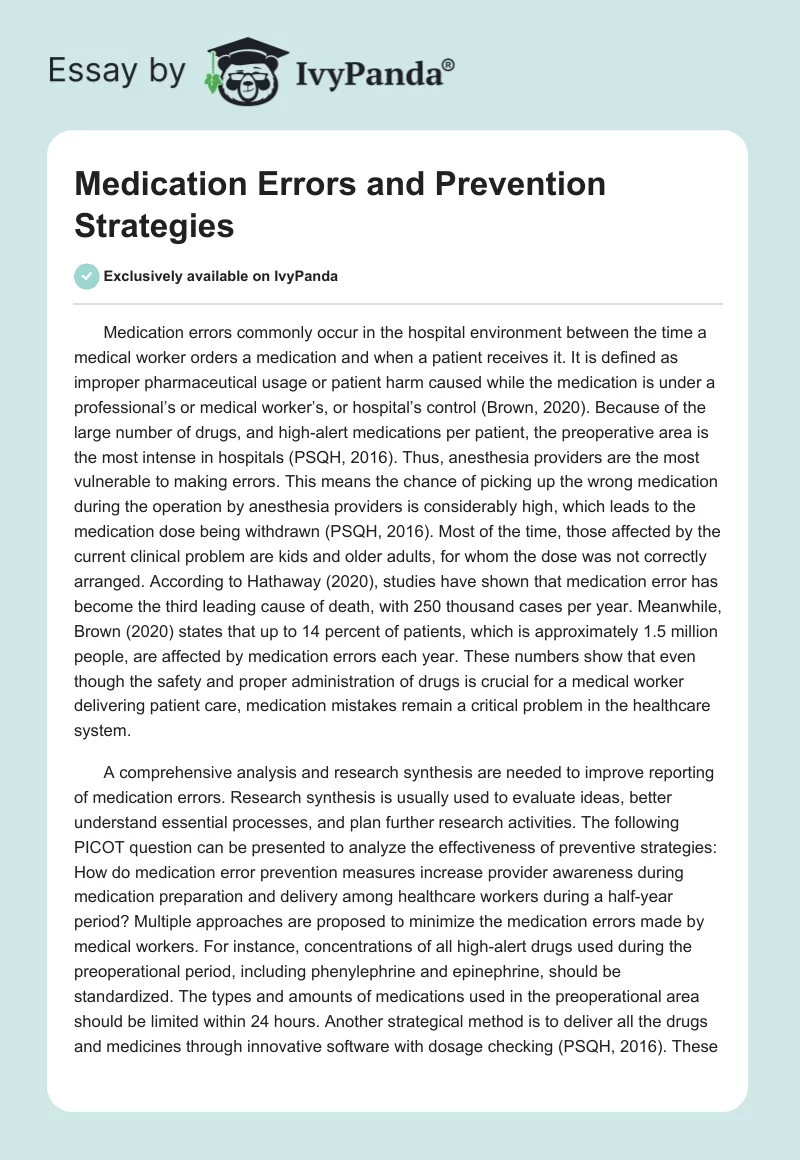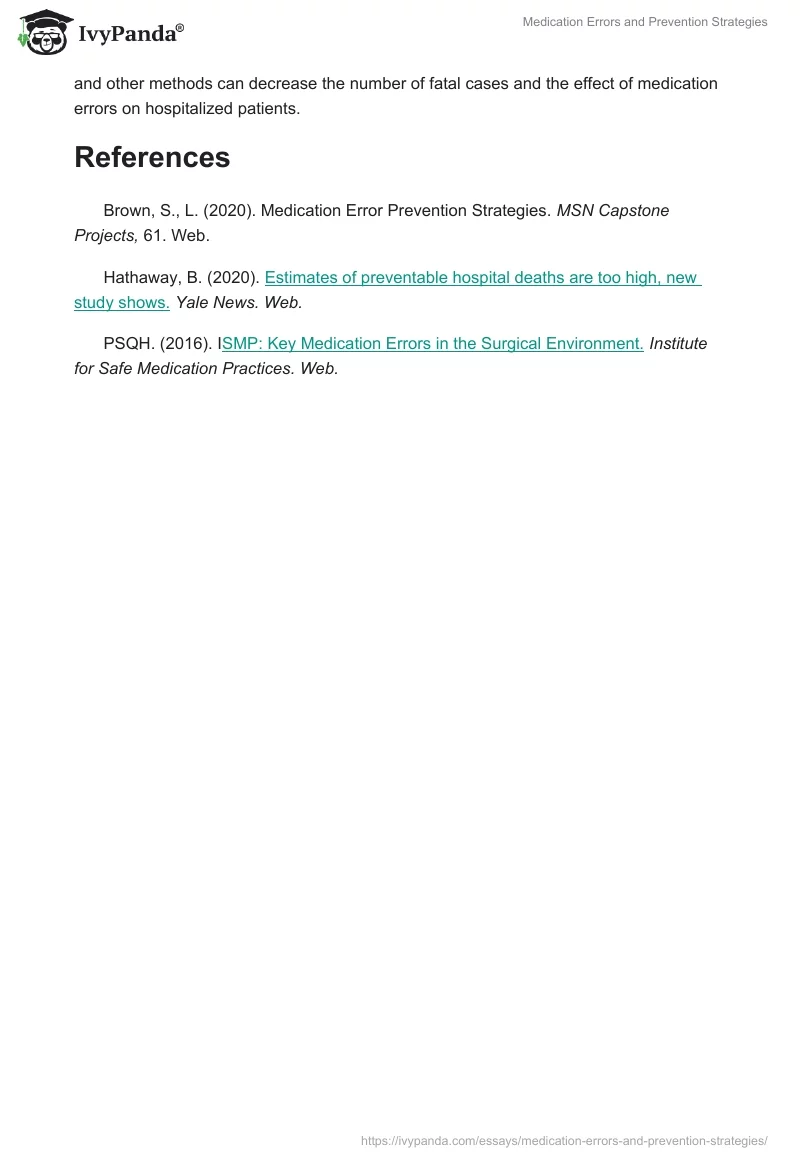Medication errors commonly occur in the hospital environment between the time a medical worker orders a medication and when a patient receives it. It is defined as improper pharmaceutical usage or patient harm caused while the medication is under a professional’s or medical worker’s, or hospital’s control (Brown, 2020). Because of the large number of drugs, and high-alert medications per patient, the preoperative area is the most intense in hospitals (PSQH, 2016). Thus, anesthesia providers are the most vulnerable to making errors. This means the chance of picking up the wrong medication during the operation by anesthesia providers is considerably high, which leads to the medication dose being withdrawn (PSQH, 2016). Most of the time, those affected by the current clinical problem are kids and older adults, for whom the dose was not correctly arranged. According to Hathaway (2020), studies have shown that medication error has become the third leading cause of death, with 250 thousand cases per year. Meanwhile, Brown (2020) states that up to 14 percent of patients, which is approximately 1.5 million people, are affected by medication errors each year. These numbers show that even though the safety and proper administration of drugs is crucial for a medical worker delivering patient care, medication mistakes remain a critical problem in the healthcare system.
A comprehensive analysis and research synthesis are needed to improve reporting of medication errors. Research synthesis is usually used to evaluate ideas, better understand essential processes, and plan further research activities. The following PICOT question can be presented to analyze the effectiveness of preventive strategies: How do medication error prevention measures increase provider awareness during medication preparation and delivery among healthcare workers during a half-year period? Multiple approaches are proposed to minimize the medication errors made by medical workers. For instance, concentrations of all high-alert drugs used during the preoperational period, including phenylephrine and epinephrine, should be standardized. The types and amounts of medications used in the preoperational area should be limited within 24 hours. Another strategical method is to deliver all the drugs and medicines through innovative software with dosage checking (PSQH, 2016). These and other methods can decrease the number of fatal cases and the effect of medication errors on hospitalized patients.
References
Brown, S., L. (2020). Medication Error Prevention Strategies. MSN Capstone Projects, 61. Web.
Hathaway, B. (2020). Estimates of preventable hospital deaths are too high, new study shows.Yale News. Web.
PSQH. (2016). ISMP: Key Medication Errors in the Surgical Environment.Institute for Safe Medication Practices. Web.


